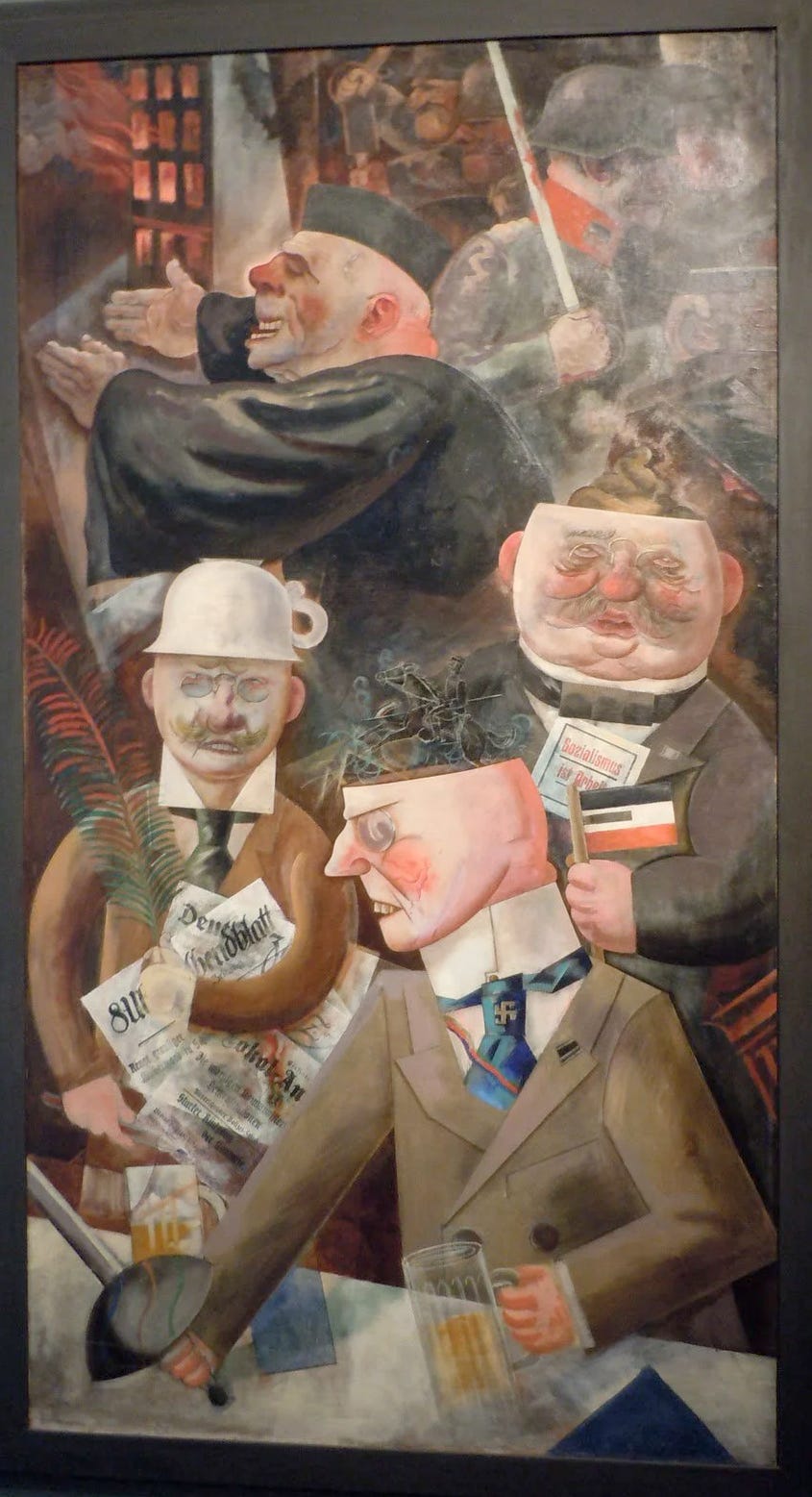Bullets inflame debate on 'Revolutionary Art'
Berlin and Vienna artists discuss the meaning and value of their work.
In 1920, German-language artists and writers became engaged in a literary debate over the “new art,” with popular columnists, artists and publishers sending editorials back-and-forth between Vienna and Berlin. The conversation took place when most people understood that, whatever their political outlook, immense revolutionary change was happening all around them. It was as undeniable as the Technical/Industrial Revolution or the end of the widespread First World War.
The “new art” or “revolutionary art” was a new way of understanding the changing social need or role of art within European society and, at the same time, of new processes (including the use of new technologies) for conceiving and shaping it. In the wake of the 1917 Russian Revolution and the brief 1918-19 uprising in Germany/Austria/Hungary, the aristocratic “high art” — once supported by the Church and/or imperial Crown — was being pushed aside. Idealists and Utopians worked toward its alternative: a more democratic, egalitarian and common “Art for all.”
In Germany, one particular thread of the 1920 art discussion — also global, by now — was sparked by political violence; a political/social flare-up following an attempted coup, in March, of right-wing soldiers and fringy federal officers in Berlin. (Occupying national ministries for three days, some of the insurrectionist infantrymen painted rough, white swastikas on their army helmets.) Sparking confrontations in several German cities, a scatterment of volunteer local “home guard” units marched into — and occupied — state capitals, where they collectively killed hundreds of demonstrators — those liberals, leftists, and trade-unionists who quickly mounted a resistance, calling a national strike.
Dresden was one of many German cities where shots were fired, and almost 60 anti-coup demonstrators were killed. In that battle, one bullet spun into the Zwinger art galleries, striking “Bathsheba at the Fountain,” a painting by Peter Paul Rubens. Visiting art instructor and writer Oskar Kokoschka, of Vienna, expressed his shock at the damage. He subsequently recruited some of his students to print an illustrated brochure or “poster” (Plakat) condemning political extremism and militancy of all kinds, “whether left-wing, right-wing, or middle-wing radical.”
Reprinted widely, Kokoschka’s essay suggested that “these scheduled war-making exercises” (solche geplanten kriegerischen Übungen) should not be conducted near Dresden’s great, palatial art gallery but, in the future, ought to be held away from the city, on rural shooting ranges “where human culture is not endangered.”1
The responses that Kokoschka received for his writing were memorable and colorful. The first widely circulated essay came from two high-profile satirical artists in Berlin, Helmut Herzfelde (a.k.a. John Heartfield) and the often-ironic German illustrator Georg Grosz…..





